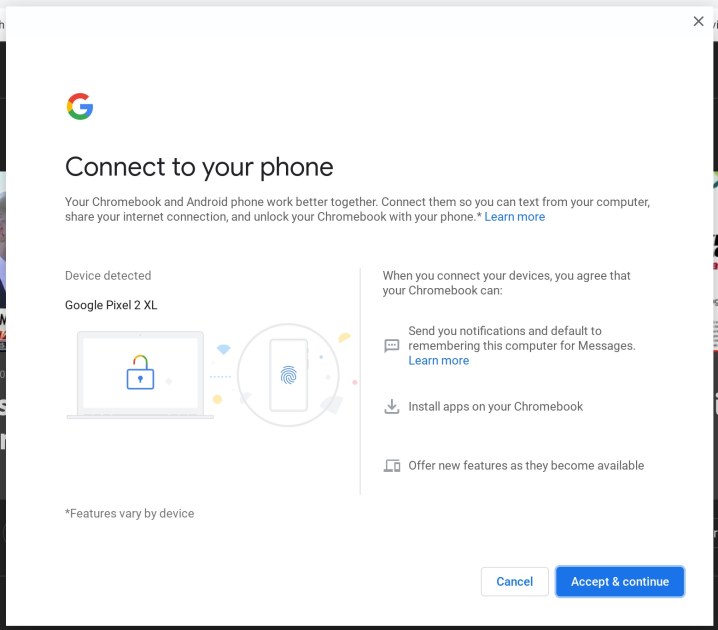
Google’s answer to Apple’s Continuity feature for iOS and MacOS users may soon be ready on Chromebooks. The company has been working on integrating Messages on Android with Chrome OS for some time and now the feature is ready for select users. To experience the Messages integration, Chromebook owners will need to sign up for the Chrome OS developer channel and activate the feature, according to Chrome Unboxed.
In the past, users would have to access the feature, known as Better Together, through its own separate settings, but a developer working on the project told Chrome Unboxed that the settings for Messages integration will be grouped together with Instant Tethering and Smart Lock features under the Connected Devices menu. Although some users who registered in the developer channel of Google’s Chrome OS reported that the feature is now live, the change may not be broadly available to everyone just yet.
If Google had enabled this feature on your account, you may also need to tinker with and enable a few Chrome flags to get the new Connected Devices menu to appear. The flags include #enable_android_messages_integration, #enable_unified_multidevice_settings. #enable_unified_multidevice_setup, and #instant-tethering, according to Chrome Unboxed’s report. Chrome Unboxed claimed that even after tinkering with the settings, the publication was not able to get the new menu to show up, so it’s likely that Google may need to activate the feature for specific accounts at this time.
Though Messages integration may be the highlighted feature here, it appears that Google may be prepping additional features to tie together Chrome OS and Android in the future. In the setup interface, Google noted when users connect their devices, they agree that their Chromebooks can display Messages, install new apps, and also “offer new features as they become available.”
Even if you’re not using Chrome OS, Google also launched a feature in the past that allows you to view text messages from your Android phone on a PC, Mac, or tablet through a web browser. Users will need to launch their favorite browser, navigate to messages.android.com, and follow the instructions to link their phone to the web session in order to view and respond to messages from their computer. The Chrome OS integration should help simplify the process for Chromebook users.
Like the Chrome OS feature, Android Messages on the web allows users to work on their PCs and respond to messages from their phones without too many distractions. Additionally, it will allow you to see your text and picture messages on a larger display, and instead of having to type out a message by tapping on your phone’s smaller screen, you’ll also have access to your computer’s full-size keyboard.
Editors' Recommendations
- Does ExpressVPN work on a Chromebook?
- Google’s AI just got ears
- Google’s Incognito Mode is in trouble
- How to use Google Gemini, the main challenger to ChatGPT
- The Windows 11 Android app dream is dead


